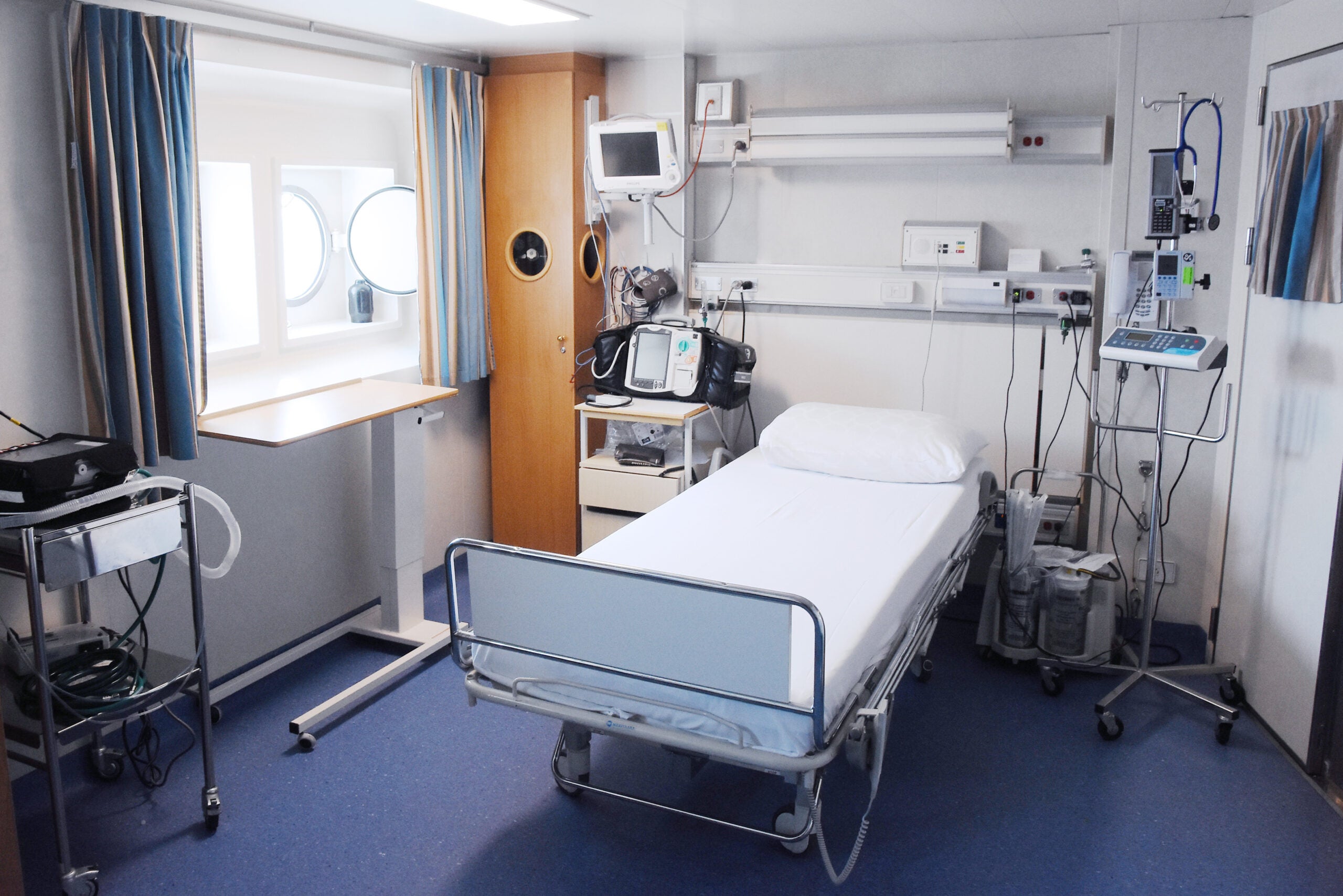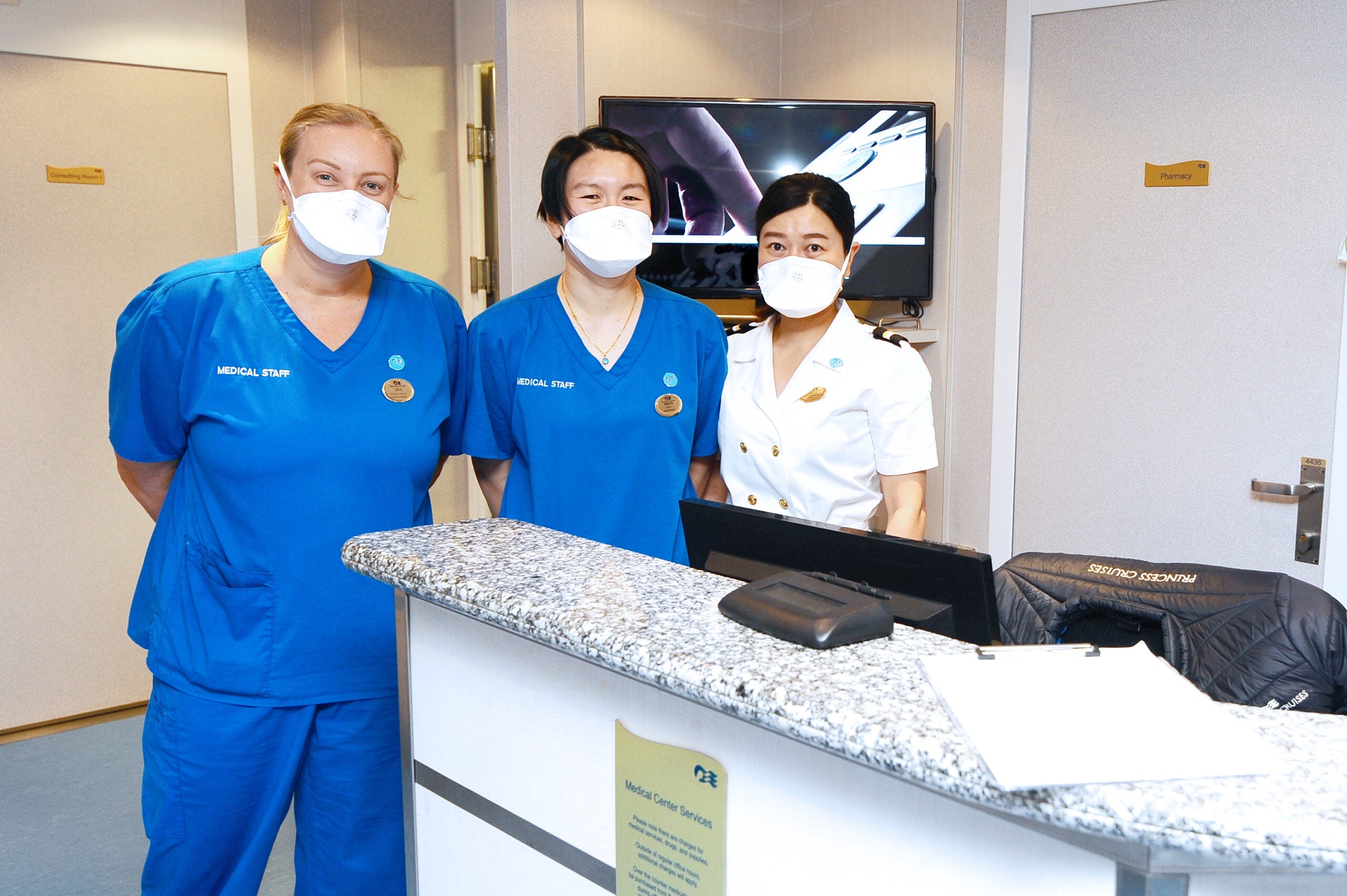“That would never happen!” I yelled at my TV screen as I watched the first episode of “Doctor Odyssey,” Ryan Murphy’s new series about a team of cruise ship medical professionals who behave anything but professionally.
Within the first few minutes of the show, which takes place on the fictional cruise ship, The Odyssey, you’ll see several breaches of security and etiquette, as well as embellishments about cruise medical facilities. As the episodes progress, the show depicts everything from the vessel’s first officer accidentally tripping on psychedelic candy to the onboard doctor performing an emergency appendectomy on one of his nurses while the ship battles a hurricane.
Sure, it’s OK to suspend reality for the sake of entertainment, but because there are already so many incorrect cruise stereotypes floating around, I called an actual cruise medic to help me set the record straight.
Liz Baugh, lead medical consultant for Scenic Luxury Cruises and Tours’ oceangoing expedition ships, is a health, safety and environment offshore medic and former Royal Navy medic with more than 25 years of expertise in maritime medicine. In an interview, she confirmed that much of what you’ll see on the show is a misrepresentation.
“We are so much more conservative than that,” Baugh said. “Everything’s very calm and measured when we practice medicine at sea, but that doesn’t make for exciting TV, does it?”
Why do passengers seek onboard medical attention?
On the show, people visit the medical team — Dr. Max Bankman (Joshua Jackson) and nurses Avery Morgan (Phillipa Soo) and Tristan Silva (Sean Teale) — to remedy botched plastic surgery and iodine poisoning from eating their weight in shrimp at the buffet. But Baugh told me emergencies are rare, with most people seeking treatment on ships for far more minor ailments than what the show would have you believe.
“The majority of people that come to a cruise ship medical center, in my experience … are [there] for things like ear, nose and throat infections; minor musculoskeletal [issues resulting from steadying themselves on a moving ship]; and seasickness.”
To ward off seasickness, which Baugh said is the most common of those three, she advises passengers to seek out medical advice from their doctors before sailing and to come prepared with any motion sickness medications prescribed. She also suggests considering cabin location when booking, as rooms lower on the ship and closer to the middle tend to experience less movement.
What can’t cruise ship medical facilities do?
Dr. Odyssey will make you believe that cruise medical centers have unlimited capabilities, ranging from skin grafting to operating on penile fractures. It’s just not true. On a cruise ship, medical facilities are largely designed to treat aches, pains, bumps and bruises.

Daily Newsletter
Reward your inbox with the TPG Daily newsletter
Join over 700,000 readers for breaking news, in-depth guides and exclusive deals from TPG’s experts
“There were a couple of things that happened — total cringe — you know, the penile fracture,” Baugh chuckled. “I was talking about this with my colleagues, and … in your career, probably once every seven or eight years you might come across something like that, but you certainly wouldn’t be doing surgery on that on a ship.”
Of course, efforts are made to stabilize passengers in the event of an emergency, but onboard medical offices are too small to house all the equipment necessary for every situation. The extent of the capabilities and the size of the medical center vary by ship. Generally, the larger the vessel, the more medical staff are on board and the more space is allocated.
Medical treatments on ships usually do not include specialized services, such as dialysis or cancer treatments. Although ship medical centers are stocked with basic medications, they aren’t full-service pharmacies. That’s why passengers need to make sure they bring a large enough supply of their prescription medications for any trips they’re planning.
Cruise medical facilities also generally aren’t equipped to perform more than the most basic of life-saving surgeries.
“No, we wouldn’t be doing anything like [an emergency appendectomy], simply because there’s an awful lot of equipment and medication and follow-up that you need,” Baugh explained. “But you also need somebody who’s a qualified general surgeon. … Some doctors are … dual-certified surgeon and medical, but some aren’t surgical, so you can’t ask them to do surgery.”
What types of emergencies can cruise medical centers handle?
One type of minor surgery — a tracheotomy — that appeared in the show is actually something onboard medical staff can handle, says Baugh. However, it’s only employed as a lifesaving measure if medical staff can’t facilitate a patient’s breathing in any other way.
You might not be surprised to learn that the most common life-threatening types of emergencies are heart-related, according to Baugh.
“Thankfully, in the four years I’ve worked with Scenic, we haven’t had any deaths on board, which is fantastic,” Baugh said. “If there were to be a death occurring on board, the most common reason is cardiovascular disease, which has led to some sort of cardiac arrest.”
Most, if not all, cruise ships — even river cruise vessels, which don’t normally have medical facilities on board because they’re always so close to land — have defibrillators to help a passenger having a heart attack while sailing. Many cruise ships also have X-ray and lab capabilities on board.
How often do emergencies require passengers to disembark?
You’ll have to suspend belief to accept the show’s appendix-removal storyline. Bankman and Silva were forced to conduct an appendectomy on Morgan because the Caribbean-bound ship was too far offshore to evacuate her. Generally, unless a vessel is in the middle of an ocean crossing voyage or an expedition sailing, the ship can send a passenger to a land-based hospital in the event that adequate treatment isn’t available on board.
“Medical evacuations are done when we’ve got a major emergency, as in this is potentially life-threatening,” Baugh said. “Those are actually very, very rare. With Scenic in the last four years, we’ve probably had one medical evacuation per year.
As opposed to a medevac by helicopter or Coast Guard ship, “a medical disembarkation is normally [for] somebody who requires … intervention that we’re unable to provide [on board],” explained Baugh. In those cases, the patient is stable enough to wait until the ship docks and can be taken to a land-based medical facility.
Even those situations aren’t common. “We maybe have three or four of those per year,” Baugh told us.
In the case of most expedition sailings, passengers’ doctors are required to fill out forms indicating that those guests are healthy enough to travel. It’s important to establish a baseline of health and fitness for expedition cruisers before they board because those sailings can be both physically demanding and remote. There are few hospitals nearby and few medevac options available if something goes wrong.
If emergencies are rare, what do ship doctors and nurses do all day?
Baugh assured me that, despite a lack of frequent emergencies, a day in the life of a cruise ship medic is still busy. And it’s not the wining, dining and dancing in which the show’s characters seem to revel more often than they do their jobs.
A typical day involves opening the medical center and checking that all equipment is in working order before the clinic opens. After the staff sees patients for the day, they follow up with previous patients — changing dressings, checking blood pressure and the like. Inventory and ordering come next so medics can take stock of supplies that might be running low.
That doesn’t mean doctors and nurses are done for the day as soon as the facility closes. They’re on call 24 hours a day, and they have other shipboard duties, too.
“They don’t just do doctoring and nursing on board,” Baugh said. “They’re also part of the health and safety team. They [conduct] training … to make sure that crew, especially in passenger areas, are understanding what a medical emergency looks like and how to raise the alarm.”
And, of course, they have mandatory rest periods to allow them to perform their best when passengers need their help.
And what about crew etiquette?
No self-respecting cruise ship captain would be caught dead playing strip poker with his officers on board, but “Doctor Odyssey” might have unsuspecting viewers thinking otherwise. As Bankman peeled off his shirt, I once again rolled my eyes.
Earlier scenes saw members of the medical team lounging by the passenger pool, responding to emergencies in their swimsuits and hooking up with each other — and with guests.
“The medical team can be invited to dine with the guests, but that’s at the permission of the captain,” Baugh said when I asked her just how cozy doctors and nurses can be with passengers. “If they’re invited to dine, then they need to gain permission to do that, but with that comes all the professional responsibility of not drinking alcohol and staying appropriate in your conversation. … There should be no crossing of those boundaries.”
But crossing boundaries is exactly what “Doctor Odyssey” does. So, the next time you observe the characters asking passengers to dance or saving a guest from an ailment that’s rare even on land, remember: It’s not really a cruise ship clinic. It just plays one on TV.
Read more about cruise-related entertainment, health and safety here:


